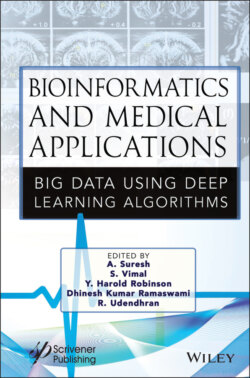Читать книгу Bioinformatics and Medical Applications - Группа авторов - Страница 59
2.4.2 Samples of Cancer Data and Analysis
ОглавлениеFigures 2.2 and 2.3 show a sample of cancer types correctly classified and classified using the data amplification method. The classification confusion matrix. Squamous cell carcinoma is often mistaken for adenocarcinoma.
After successfully applying classification model in this dataset, we have to test the accuracy, precision, and recall of the model. So, we observed the confusion matrix whose results are as follows: actual and predicted value of adenocarcinoma is 89% matched and only 11% items are not predicted correctly. Squamous cell carcinoma is predicted correctly 60% which is less as compared to adenocarcinoma. Actual and predicted value of small cell carcinoma is 70% matched and only 30% items are not predicted correctly.
It shows the original image classification and the wide range of image accuracy, respectively. Results obtained using magnification images show that the classification accuracy for adenocarcinoma, squamous cell carcinoma, and small cell cancer is 89.0%, 60.0% and 70.3%, respectively, and the overall corrected rate is 71.1%. In addition, apply plug-in to improve the classification.
Finally, we improved our classification model and accuracy score of trained set and augmented sets are given below:
Adenocarcinoma predicted 73% original images of lung cancer, whereas 89% for augmented images. We found that 45% original images are correctly classified and 60% augmented images are classified for squamous cell carcinoma. Small cell carcinoma is classified correctly 75% for original images and 70% for augmented images.
Figure 2.2 Sample images of correctly classified and misclassified carcinoma.
Figure 2.3 More sample images of correctly classified and misclassified carcinoma.
In the three types of lung cancer, the efficiency of the unsupervised clustering was maximum in adenocarcinoma and minimum in squamous cell carcinoma. Squamous cell adenocarcinoma requires more images. DCNN helped to correctly classify 70% of lung cancer cells.
